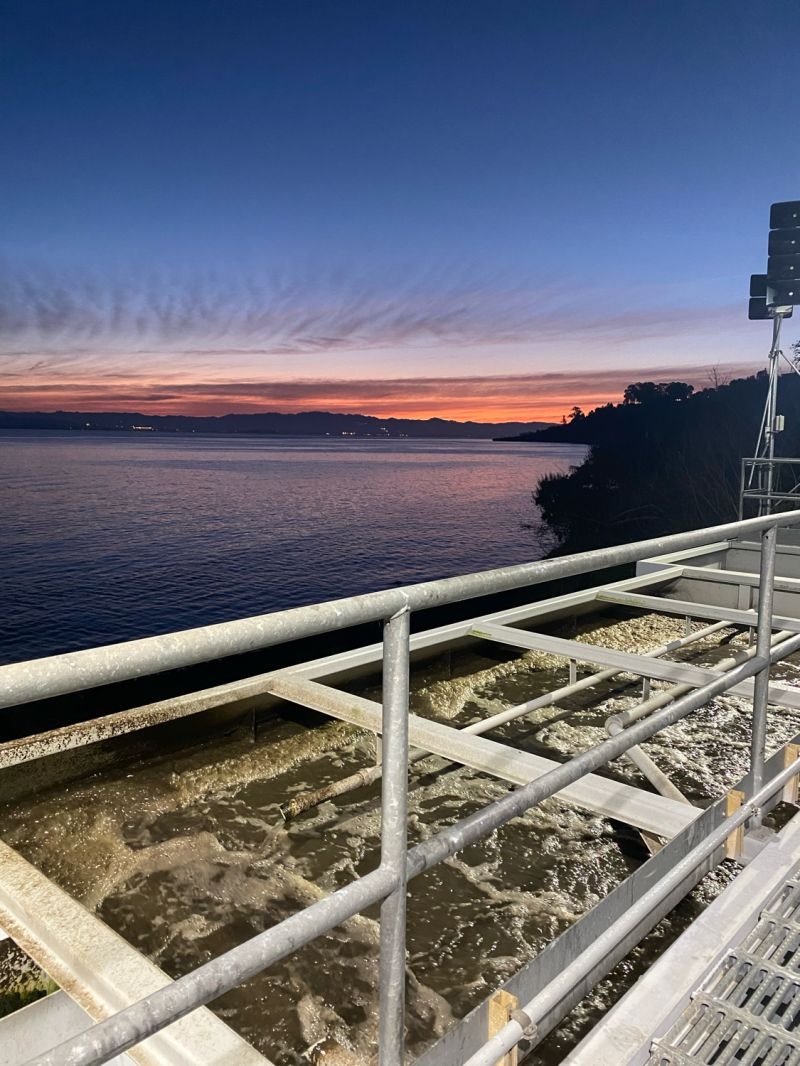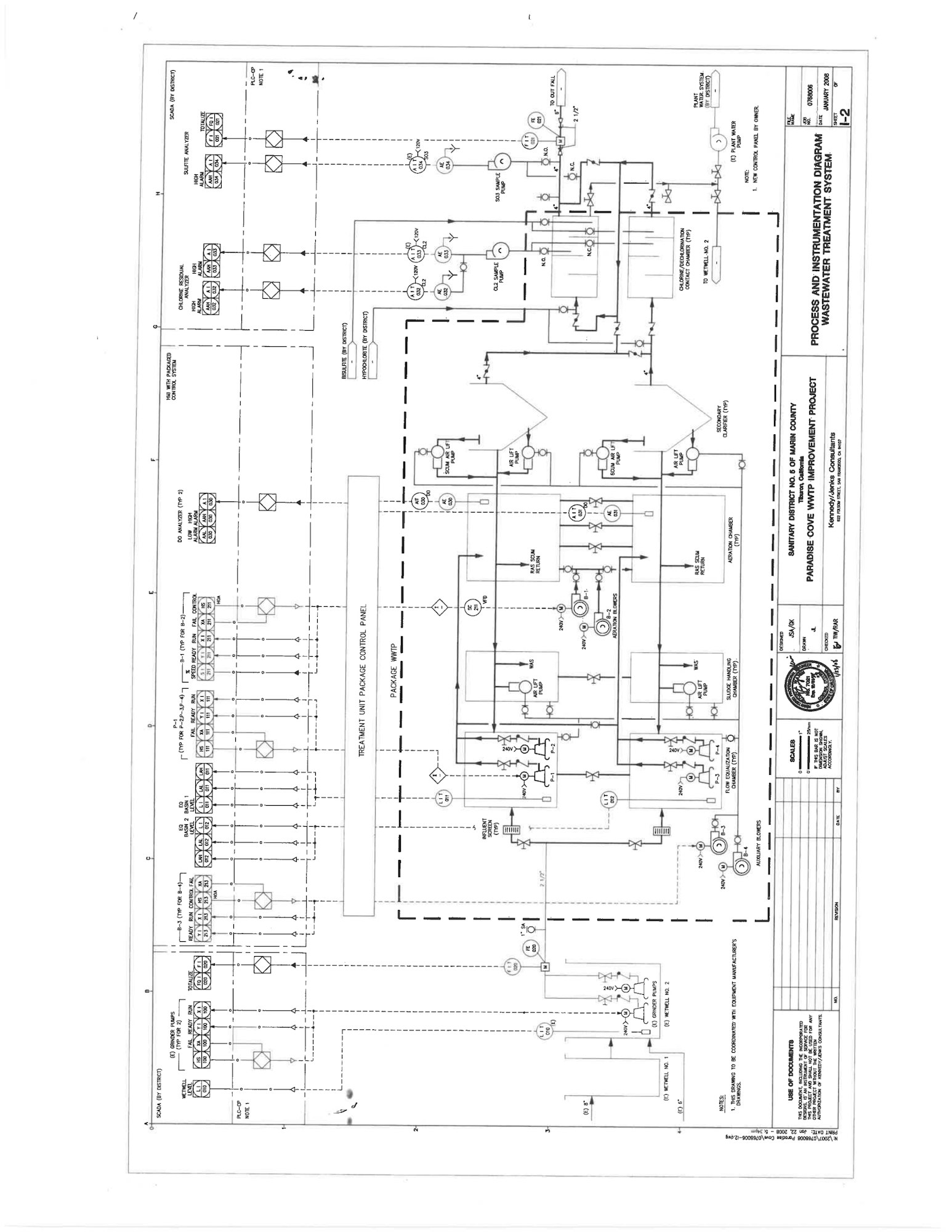Paradise Cove Wastewater Treatment Plant
Paradise Cove WWTP

Sanitary District No. 5 of Marin County (Discharger) owns and operates the Paradise Cove Wastewater Treatment Plant and its associated wastewater collection system (collectively, the Facility). The plant provides secondary treatment of wastewater collected from its service area and discharges to Central San Francisco Bay.
Location and Service Area
The plant provides secondary treatment and disinfection of domestic wastewater from an all-residential unincorporated area within the Town of Tiburon located from 3200 through 4200 Paradise Drive. It serves a population of about 430 people through 109 service connections.
Collection System
The wastewater collection system consists of approximately 3.1 miles of pipeline (1.4 miles of gravity pipelines and 1.7 miles of force mains ranging from 3 and 6-inches in diameter) and two pump stations.
The District has deleloped and implemented a Sewer System Management Plan (SSMP) The SSMP documents the Districts program to properly operate and maintain it sanitary sewer system. The SSMP addresses the following elements.
- Goal
- Organization
- Legal Authority
- Operation and Maintenance Program
- Design and Performance Revisions
- Overflow Emergency Response Plan
- Fats, Oil, and Grease (FOG) Control Program
- System Evaluation and Capacity Assurance Plan
- Monitoring, Measurement, and Program Modifications
- SSMP Program Audits
- Communication Program
For detailed information please click on the dowloadable SSMP pdf. below
2018 05 16 F Paradise Cove SSMP UPDATE 2018 05012018TR.pdf
Wastewater Treatment
The plant can provide secondary treatment and disinfection for an average daily dry weather flow of 0.04 MGD and a peak wet weather flow of 0.10 MGD, the latter of which is based on the plant’s outfall capacity. The wastewater treatment process uses two identical treatment trains, each with an average daily dry weather flow capacity of 0.02 MGD. Each train consists of grinding, influent screening, flow equalization (primary clarification), extended aeration, secondary clarification, chlorination (using sodium hypochlorite), and dechlorination (using sodium bisulfite). Typically, one treatment train remains offline because influent flows are less than a treatment train’s flow capacity. In 2020, the average daily dry weather influent flow was 0.016 MGD and the maximum daily influent flow peaked at 0.092 MGD. The Discharger can divert flows exceeding the plant’s peak design flow rate into the offline treatment train for storage.

Sludge and Bio-Solids Management
Sludge is stored onsite in a storage tank prior to being pumped and transported to the Sanitary District No. 5 Tiburon Wastewater Treatment Plant for treatment and disposal.
Discharge Point and Recieving Waters
Discharge of treated effluent to Central San Francisco Bay is through a submerged, 4-inch, rubber duckbill diffuser valve located approximately 400 feet offshore (Discharge Point No. 001) via a 6-inch diameter, high-density polyethylene buried pipeline. The outfall can discharge a peak flow of 0.10 MGD. Central San Francisco Bay is in the Central Bay Basin watershed between the Richmond-San Rafael Bridge and the San Francisco Oakland Bay Bridge.
NPDES Permits
Paradise Cove WWTP Permit
R2-2021-0017.pdfNutrient Order
R2-2019-0017 Nutrient Order W Highlights05162019TR.pdfMercury & PCB Order
R2-2022-0038.pdfCollection System Waste Discharge Requirements (WDR)
ORDER WQ 2022-0103-DWQ Statewide Waste DIscharge Requirements.pdf
